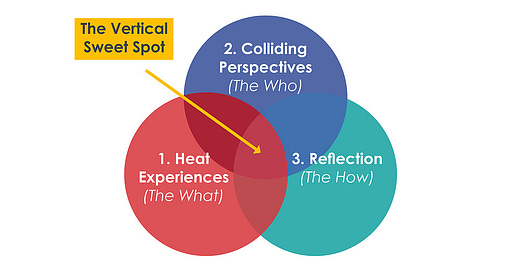There will be many millions more people and fewer jobs in the future While in the past, focusing on building a particular skill and developing expertise in it was enough. Today that is not good enough & lifelong learning is no longer a choice but a necessity for those who want to thrive. And to add to the complexity party, robots and algorithms continue to become more central to the workplaces & disrupt current jobs!
Even though the economic imperative to be a hybrid, adaptive learner is growing, the unfortunate truth is that people spend only about 1% of their workweek focused on learning new skills or developing existing skills. LinkedIn found that employees waste one-third of their day on emails that have little or nothing to do with their jobs. It is estimated that by 2022 India’s 600 million employees will be working in new jobs that did not exist in the years prior, while 37 percent will be in jobs that require radically different skill sets from the past
As entrepreneurs & leaders build companies, they need to focus on pushing their own "vertical growth". But this is hard to do, as any personal change is "non-trivial". Horizontal growth is more about competencies & Vertical growth is more about "mindsets".
You risk more when you attempt vertical growth. You risk failure. And more often than not, vertical growth impacts your entire life not only one aspect of it! Yet my experience of being an entrepreneur & mentoring others tells me that this is really hard. I wonder what % of the $ 11.3 billion raised by Tech startups in India would be spent on "vertical growth" or is it largely investments for land grab?
Vertical growth for leaders happens when the following 3 situations occur in a vertical growth Venn diagram:
Heat experiences: The leader faces a complex situation that disrupts and disorients their habitual way of thinking. Most companies have no shortage of this! It is a common situation!
Colliding perspectives: The leader is then exposed to people with different worldviews, perspectives & styles of operation. Again most leaders will face this often! Again another common situation!
Reflection: At this point, a small minority of leaders are emotionally intelligent & make sense of this overlap of complex situations & differing perspectives. For the majority, she either uses a process or a coach to help her integrate and make sense of these perspectives and experiences & that is when vertical growth happens. And this is what is uncommon & makes the skill so valuable! To reflect & not get paralyzed!
source: Nicolas Petrie
In fact, when I reflect on my years of growing a company, the answer is that we spent very little resources directly in growing our leaders vertically. And yet, one of the lessons that I learned from my partner, Swami, was the enormous amount of time he spent in growing people by engaging with them in the field of battle! So giving a “client perspective” to a junior client servicing manager in the heat of action before an important meeting, is where the real learning happens!
source: Rallyware
Honestly, it is only in retrospect that I can say this because at that time I was way too emotionally immature to appreciate this. I learned the hard way, through hard knocks & as I observe the young startup founders today I do notice that entrepreneurs who will grow companies have this talent of “growing people” in spades! Over time, I learned this(thanks Swamy) & saw for myself the tremendous results that you can get by teaching people “in the trenches”.
Most startups grow because they are fast, agile, and adaptable. They have a relentless focus on customers. And they hate complexity. Yet as companies grow, they tend to accept a paradoxical situation-while they achieve scale, they lose that passionate, high-energy fabric that may be called the founder’s mentality. So they tend to lose the very core strengths and values that helped them succeed and grow! Bain consulting calls this the Founders mentality.
Josh Bersin says that $14 billion was spent annually by corporations and there are more than 70,000 books and videos on Leadership development. And yet, he says, that when he asks companies about their top talent issues, “improving our pipeline of leadership” always comes out near the top.
Why is this space of Leadership development so broken? If anything today managers at every level need to be leaders.
Today everyone is learning differently & as my experience taught me, learning at the moment, in the trenches when stuff is happening, is the most powerful way to learn.
Horizontal leadership development programs build skills - they give people the tools to do what they are doing with more efficiency. Vertical leadership development programs are built on the science of human development that shows how our minds can continue to grow through our lifetime.
Growing leadership mindsets is the new competitive advantage.
Ask leaders to reflect on how much they experience the three situations (heat experiences, colliding perspectives & Reflexion)in their work and life. Ask if they are out of balanc-“I have lots of heat, but no reflection”. Bring in outsiders who will both challenge the group (heat) and give them worldviews that clash with their own (colliding perspectives).








